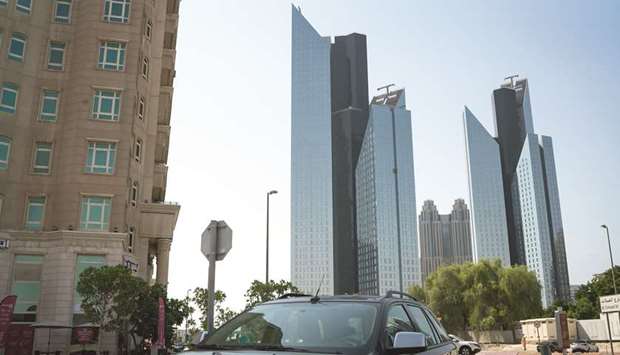Any move towards significantly higher regional rates — those in Saudi Arabia have actually fallen in the past year, against the US tide — could weigh on a modest acceleration of economic growth expected in 2018.
In theory, short-term money rates in the US and the Gulf should move in similar ways as the region’s currencies are closely linked to the US dollar, leaving central banks little room to conduct independent monetary policies.
But in the last couple of years, theory has gone out the window and spreads have fluctuated wildly as Gulf economies struggle under the impact of low oil prices.
Last Monday, the three-month Saudi interbank offered rate was just 8 basis points above its US dollar equivalent — the smallest gap since mid-2009, when rates were distorted by the global financial crisis — compared with 104 bps at the end of 2016.
Meanwhile, the spread of three-month money in the UAE has shrunk on occasions to zero in the last several weeks, the lowest since late 2008. It stood at 6 bps last Monday.
Narrowing spreads have been good news for businessmen and consumers in the Gulf, shielding them from some of the pain of the Federal Reserve’s five increases in US rates since late 2015.
In particular, slumping real estate markets in Dubai and elsewhere in the region, deflated by low oil prices, have been spared a significant rise in loan costs.
While the three-month US dollar London interbank offered rate has surged 82 bps in absolute terms since the end of 2016, the three-month Saudi rate is down slightly and the UAE rate has edged up only gradually.
That pattern may change in the coming months as the US central bank continues to raise rates.
Markets expect between two and four more Fed hikes of 25 bps each in 2018, and this time, the conditions that insulated the Gulf from US policy may change.
“Spreads have narrowed so much that it’s difficult for them to narrow more. The feed-through from higher US rates might be more this year, more of a headwind for the economy,” said Monica Malik, chief economist at Abu Dhabi Commercial Bank, said of the outlook in the UAE.
Economic growth in the Gulf oil exporters is expected to pick up a little this year; analysts predicted in a Reuters poll last month that Saudi gross domestic product would expand 1.5%, after contracting 0.5% in 2017.
But growth looks likely to stay far below the pace of around 5% early this decade, and real estate markets are in poor shape to cope with higher interest rates.
Dubai property prices are estimated to be down as much as 16% to 19% from peaks hit several years ago.
Olivier Panis, senior regional credit officer at Moody’s Investors Service in Dubai, said Saudi spreads narrowed for two main reasons last year: less demand for loans due to the weak economy, and lower domestic borrowing by the government.
Bank lending to the Saudi private sector shrank 0.8% from a year earlier in December.
However, Panis expects overall loan growth to pick up this year because of greater government spending and a slightly stronger economy.
Loan growth could reach 4%-5% in 2018 and 8-10% in 2019.
That would not be enough to tighten the money market significantly, Panis said, but it could prevent a further loosening and start to change the outlook for rates.
Similarly, annual bank lending growth in the UAE sank to 0.4% in December, the lowest in at least three years.
Panis said growth could rebound to around 5% in 2018.
Another factor pushing down Gulf spreads, bankers say, is increased confidence about the stability of the region’s financial system after last year’s recovery in oil prices.
Governments now have more money to support banks if needed, so banks demand less of a risk premium in lending to each other.
But that trend may have run its course; Brent crude has dropped back to around $63 a barrel from above $70 last month.
Residential and commercial towers stand in the Business Bay district of Dubai. The emirate’s property prices are estimated to be down as much as 16% to 19% from peaks hit several years ago.

